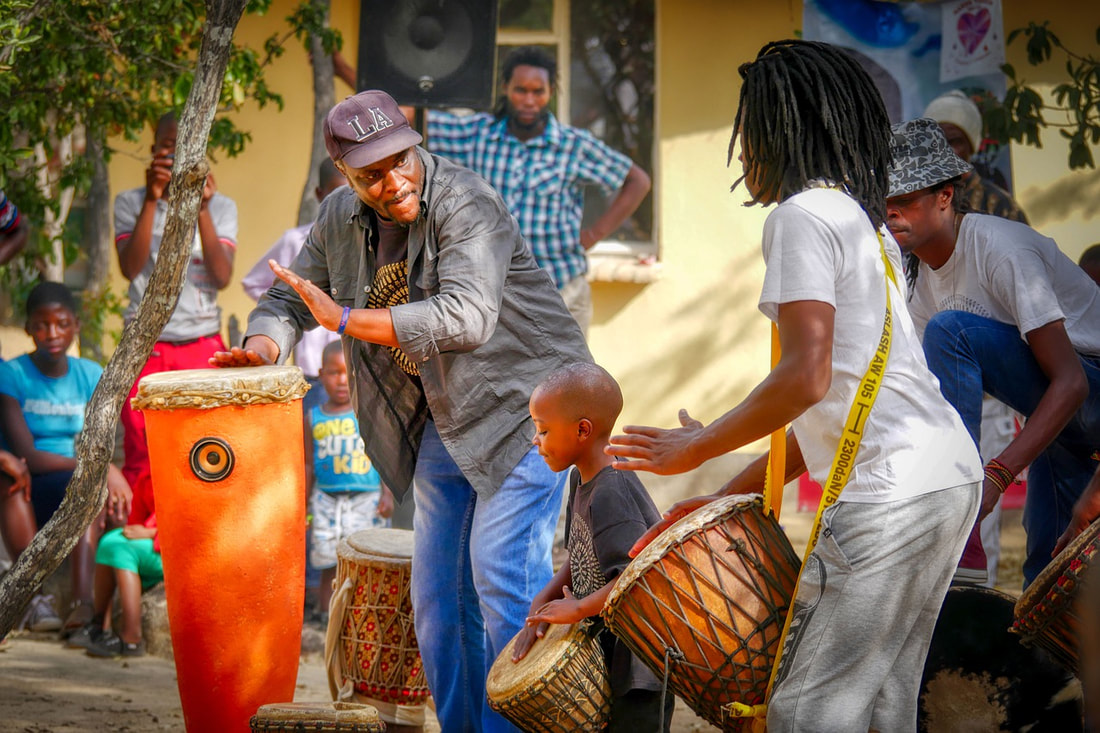|
The common language of music brings people of diverse backgrounds together throughout the world, while also opening new doors to appreciation for the musical sounds and styles that distinguish individual regions and cultures. Even a quick glance at the music of Africa, the world’s second-largest continent, will reveal a diverse set of traditions and expressions. Musicologists note a constantly diversifying blossoming of genres across the continent, with each culture producing notable musicians and distinctive forms of music. Here are summaries of only a few of the African musical genres that are today both highly influential and particularly notable. All are worth taking the time to get to know and enjoy. Afrobeat and AfrobeatsAfrobeat fuses the sounds of Western jazz and nightclub life into the centuries-old traditions of Nigerian music. Now often heard around the world, Afrobeat often incorporates beats common to other, non-African styles, such as hip-hop. The style is typically marked by strong vocal melodies backed by bass percussion, making it one of the world’s most danceable music genres. Afrobeat’s ultimate origins can be traced to Ghana in the 1920s. In those days, local Ghanaian musicians seasoned their songs with calypso beats and even the popular Western foxtrot. Then in the late 1960s, a musician who would earn the nickname of the “Father of Afrobeat,” Fela Kuti—strongly influenced by American artist James Brown—put his own spin on the style. By the mid-1970s, it had become widely popular in Nigeria. Fela, who died in 1997 at only 58 years of age, remains a legend among Nigerian music-lovers in particular. He has also influenced later generations of younger musicians worldwide, including Mos Def and Erykah Badu. Afrobeats—a linear descendent of Fela’s 1960s and ‘70s Afrobeat—features heavily in Beyoncé’s 2019 album The Lion King: The Gift. She collaborated extensively with young musicians from Nigeria, Cameroon, and other parts of Africa, showcasing their talents in a way that brought many of them to the attention of a global audience for the first time. Gnawa The Sahara Desert region is the homeland of Gnawa music, which also goes by the names of Gnawi Blues and Ethno-Pop. Its beats are anchored in the traditions of the Gnawa community, which derives from groups of sub-Saharan peoples who were enslaved and first brought to Morocco in about the 11th century CE. Over centuries of enslavement, during which they were typically forced to serve as soldiers, the Gnawa assembled themselves as a distinct people out of several previously unconnected sub-Saharan groups. They formed their own cultural traditions in the process and gradually gained their freedom. Gnawa music originated in religious ceremonies—blending music, dance, and poetry—that resulted from a blend of the group’s highly spiritualized version of Islam and the local traditions of West Africa. In recent years, the tone of this music became more secularized even as it has gained popularity across Moroccan society. Knowledgeable listeners often find parallels between Gnawa musical styles and the blues in the United States. Gnawa is especially distinctive in its use of drumming, metallic castanets, and the guembri, a bass lute with three strings. Gnawa music has gained so much popularity that the Moroccan government has established an annual festival in the city of Essaouira, dedicated to the style as one of the country’s prominent cultural heritage products. Malian bluesMali has gained a worldwide reputation as a focal point for blues music. As music scholars have pointed out, the blues is a uniquely African American art form, but one with deep roots in West Africa, deriving as it does from the spirituals and work songs brought to the New World by enslaved people centuries ago. Many recent Malian blues artists, including the late Ali Farka Touré, have grounded their style in the music of their own cultures, rather than in that of the United States. Others are influenced to one degree or another by Western pop music. African American blues, traditional Malian sounds, and world beats all continue to play off against each other throughout this genre. Other Malian blues artists include Afel Bocoum, who mixes musical traditions from the north and south of his country with the sounds of Western and Malian instruments. One of the world’s premier annual blues events, Festival in the Desert, has taken place outside Timbuktu since 2001, highlighting the work of Tuareg musicians, blues artists, and others. With the festival suspended indefinitely due to recent unrest in Mali, organizers hope to showcase the talents of Malian blues musicians by promoting tours elsewhere. Ethio-Jazz Also known as Ethiopian jazz, Ethio-Jazz offers a one-of-a-kind melding of Western-inflected jazz, soul, Latin stylings, and Afro-funk with the often-haunting sounds of ancient Ethiopian music. Today recognized as one of Ethiopia’s most sought-after cultural exports, Ethio-Jazz dates back to the 1950s.
As it has developed over the decades since, this sound has expanded Africa’s—and the world’s—musical vocabulary. Its melodious sounds are anchored in ages-old Ethiopian ballads often evoking a sense of love, yearning, and nostalgia. In the 1950s, Nerses Nalbandian, whose family had settled in Ethiopia as refugees from the 1915 genocide against Armenians, laid the groundwork for the development of the genre. Nalbandian’s uncle had led Ethiopia’s National Opera, and Nalbandian himself took up the baton after his uncle’s retirement. He composed music for the country’s National Theatre, working out ways to preserve authenticity while incorporating local musical traditions in arrangements for big bands. His solution to this problem centered on adapting Western instrumentation while acknowledging the distinctive musical scales indigenous to Ethiopia. Bandleader and composer Mulatu Astatke—also renowned as a keyboardist and vibraphonist—is another monumental figure in the history of Ethio-Jazz. Astatke, often credited as the “Godfather” of the genre who fully brought American jazz rhythms into traditional Ethiopian forms, is largely responsible for the recent popularity of Ethio-Jazz on the world stage. Comments are closed.
|
Photo used under Creative Commons from Marina K Caprara

 RSS Feed
RSS Feed
